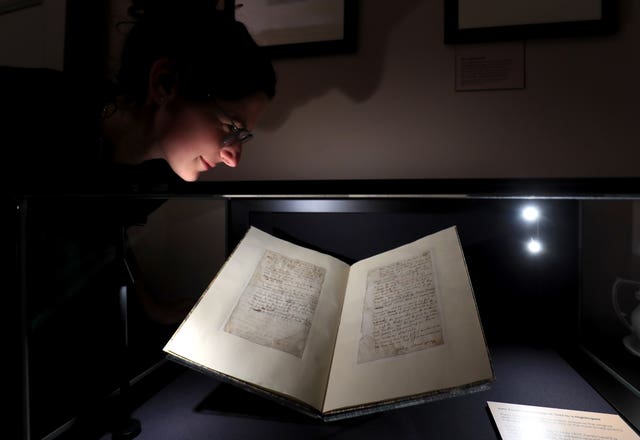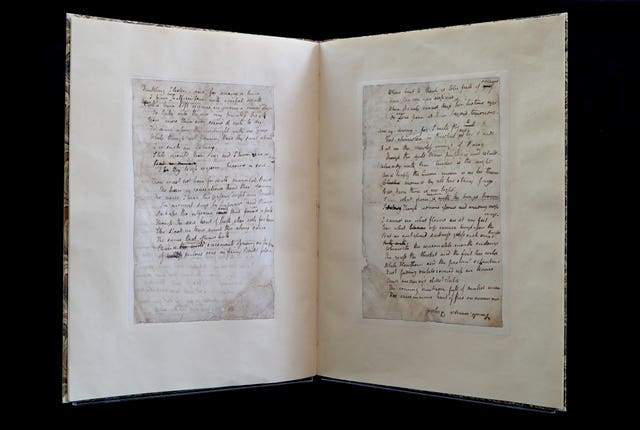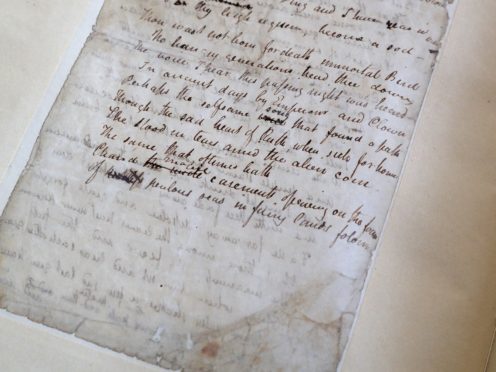John Keats’ Ode To A Nightingale is returning to the place where he wrote the manuscript 200 years ago.
The Romantic poet is said to have composed the work “on a few scraps of paper” under a plum tree in his garden in Hampstead, north-west London, in just one morning.
He died two years later, aged just 25, before the poem, inspired by birdsong, became the acclaimed and popular work it is today.

The handwritten document is going on display at Keats House, the place which is said to have nurtured some of his greatest works in the early 1800s.
Dog-eared and slightly marked, it is the only manuscript of Ode To A Nightingale in Keats’ own hand.
Rob Shakespeare, principal curator of Keats House, said it would be “very powerful” to see it back “in the house for the first time since he wrote it”.
Keats, now seen as one of the greatest English poets, rented one side of the house, living with his friend, Charles Brown.
“O there is nothing like fine weather, and health, and Books, and a fine country, and a contented Mind , and Diligent- habit of reading and thinking, and an amulet against the ennui – and, please heaven, a little claret-wine cool out of a cellar a mile deep" Wrote Keats #otd pic.twitter.com/DHjVAIEdoa
— Keats House Museum (@KeatsHouse) May 1, 2019
Mr Shakespeare told the Press Association: “He came here at a very sad time in his life. He had been orphaned, his brother had died after suffering from tuberculosis and he had also given up a promising medical career.
“But a literary circle gave him friendship and support and encouraged his work.
“He had no money but he had determination and focus.
“Hampstead really nurtured that and allowed him respite in a turbulent life.”
The poet, who was “pilloried by critics during his lifetime”, also fell in love while living in the house – with Fanny Brawne.

Mr Shakespeare added: “He found some peace, inspiration and encouragement to write this work, which really stood the test of time…
“I’d hope he’d think this is a really fitting tribute to an astonishing work of literature.”
Ode To A Nightingale is one of five works, which have been ranked among the greatest short poems in the English language, written by Keats during this creative period.
The poem was last on public display 25 years ago, at Dove Cottage in the Lake District, to celebrate the bicentenary of Keats’ birth.
It will be displayed in the room which was Keats’ parlour in the house, which is owned by the City of London Corporation.
Suzanne Reynolds, assistant keeper of manuscripts and printed books at the Fitzwilliam Museum in Cambridge, which looks after the manuscript, said: “This was a place where Keats was, during a very precarious and difficult life, secure and happy for a while.
“This was a secure home and maybe it’s not a coincidence that it also correlates with a period of immense creativity, when Keats wrote these great Odes.
“I think it will be very moving for people.”
Keats House and the Fitzwilliam Museum have collaborated to arrange the four-day viewing (May 3-6 inclusive) as part of the Keats200 bicentenary, which celebrates a period of creativity in Keats’ short life.
